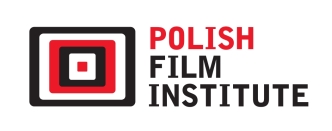Ideologies of/and Pleasure
Abstract
The latest volume of the Wrocław series Germany - Media - Culture fits in with the new, multifaceted picture of the history of German cinema that has been formed recently, but it is not a typical presentation of film history. The author of the review draws attention to the numerous merits of the book by Andrzej Gwóźdź Zaklinanie rzeczywistości. Filmy niemieckie i ich historie 1933-1949 [Enchantment of Reality. German Films and their Histories 1933-1949] (2018). Above all, it combines the qualities of an interesting reading with the meticulous reconstruction of the audiovisual landscape of Germany of the years 1933-1949. The most important context of this landscape are various ideologies, which is why one of the dominant themes of the monograph is the theme of cinema as a weapon of war, subordinated to various institutions. The second common theme in the films analysed in the book is the pleasure principle, implemented both by the cinema of the Third Reich and by cinematographies of the post-war occupation zones. The third part of the volume, offering a collection of precisely edited writings from the discussed era, is also noteworthy.
Keywords:
Andrzej Gwóźdź, German cinema, ideology, pleasureReferences
T. Kłys, Od Mabusego do Goebbelsa. Weimarskie filmy Fritza Langa i kino niemieckie do roku 1945, Łódź 2013.
DOI: https://doi.org/10.18778/7525-759-5
Google Scholar
M. Saryusz-Wolska, Ikony normalizacji. Kultury wizualne Niemiec 1945-1949, Warszawa 2015.
Google Scholar
T. Kłys, Film niemiecki w epoce wilhelmińskiej i weimarskiej, w: Historia kina, t. 1, Kino nieme, red. T. Lubelski, I. Sowińska, R. Syska, Kraków 2009, s. 393-462;
Google Scholar
T. Kłys, Niemiecki film fabularny u schyłku Republiki Weimarskiej i w Trzeciej Rzeszy (1929-1945), w: Historia kina, t. 2, Kino klasyczne, red. T. Lubelski, I. Sowińska, R. Syska, Kraków 2011, s. 191-251;
Google Scholar
A. Gwóźdź, Powojenne kino niemieckie, w: tamże, s. 1013-1048;
Google Scholar
A. Gwóźdź, Po obydwu stronach muru: kinematografie niemieckie, w: Historia kina, t. 3, Kino epoki nowofalowej, red. T. Lubelski, I. Swoińska, R. Syska, Kraków 2015, s. 687-746.
Google Scholar
E. Fiuk, Inicjacje – tożsamość – pamięć. Kino niemieckie na przełomie wieków, Wrocław 2012.
Google Scholar
A. Gwóźdź, Obok kanonu. Tropami kina niemieckiego, Wrocław 2011.
Google Scholar
S. Sontag, Fascynujący faszyzm, w: tejże, Pod znakiem Saturna, tłum. D. Żukowski, Kraków 2014, s. 94.
Google Scholar
B. Urwand, Kolaboracja. Pakt Hollywoodu z Hitlerem, tłum. R. Lisowski, Wołowiec 2015.
Google Scholar
A. Gwóźdź, Zaklinanie rzeczywistości. Filmy niemieckie i ich historie 1933-1949, Oficyna Wydawnicza ATUT, Wrocław 2018.
Google Scholar
Authors
Magdalena Kempna-Pieniążekkwartalnik.filmowy@ispan.pl
University of Silesia in Katowice Poland
Adiunkt w Zakładzie Filmoznawstwa i Wiedzy o Mediach Uniwersytetu Śląskiego w Katowicach. Autorka kilku monografii, m.in.: Formuły duchowości w kinie najnowszym (2013), Marzyciele i wędrowcy. Romantyczna topografia twórczości Wernera Herzoga i Wima Wendersa (2013), Neo-noir. Ciemne zwierciadło czasów kryzysu (2015) oraz współautorka książki Inny/Obcy. Transnarodowe i transgresyjne motywy w twórczości Petera Weira (2017). Prowadzone przez nią badania dotyczą estetyki noir i neo-noir, problemów duchowości i religijności w kinie oraz współczesnych wariantów autorstwa filmowego.
Statistics
Abstract views: 193PDF downloads: 58
License
Copyright (c) 2018 Magdalena Kempna-Pieniążek

This work is licensed under a Creative Commons Attribution 4.0 International License.
The author grants the publisher a royalty-free non-exclusive licence (CC BY 4.0) to use the article in Kwartalnik Filmowy, retains full copyright, and agrees to identify the work as first having been published in Kwartalnik Filmowy should it be published or used again (download licence agreement). The journal is published under the CC BY 4.0 licence. By submitting an article, the author agrees to make it available under this licence.
In issues from 105-106 (2019) to 119 (2022) all articles were published under the CC BY-NC-ND 4.0 licence. During this period the authors granted a royalty-free non-exclusive licence (CC BY-ND 4.0) to use their article in „Kwartalnik Filmowy”, retained full copyright, and agreed to identify the work as first having been published in our journal should it be published or used again.
Most read articles by the same author(s)
- Magdalena Kempna-Pieniążek, “Aeronautes”: Herzogian Aerial Shots , Kwartalnik Filmowy: No. 118 (2022): One Take
- Magdalena Kempna-Pieniążek, The Dark Side of Poland? Neo-Noir and Police Cinema in the Work of Patryk Vega , Kwartalnik Filmowy: No. 95 (2016): Transnational Dimension of Polish Cinema
- Magdalena Kempna-Pieniążek, The Authors and Genres of New Wave Cinema , Kwartalnik Filmowy: No. 93-94 (2016): American Cinema
- Magdalena Kempna-Pieniążek, The Art of Illusion , Kwartalnik Filmowy: No. 92 (2015): Polish Cinema and Politics
- Magdalena Kempna-Pieniążek, Scandinavia Under the Magnifying Glass , Kwartalnik Filmowy: No. 97-98 (2017): Wandering Motifs
- Magdalena Kempna-Pieniążek , The So-Called Classic Cinema , Kwartalnik Filmowy: No. 79 (2012): Interiors: On Cinematic Enclosed Space
- Magdalena Kempna-Pieniążek, Polyphonic “Silent Cinema” , Kwartalnik Filmowy: No. 71-72 (2010): Narration in Film











